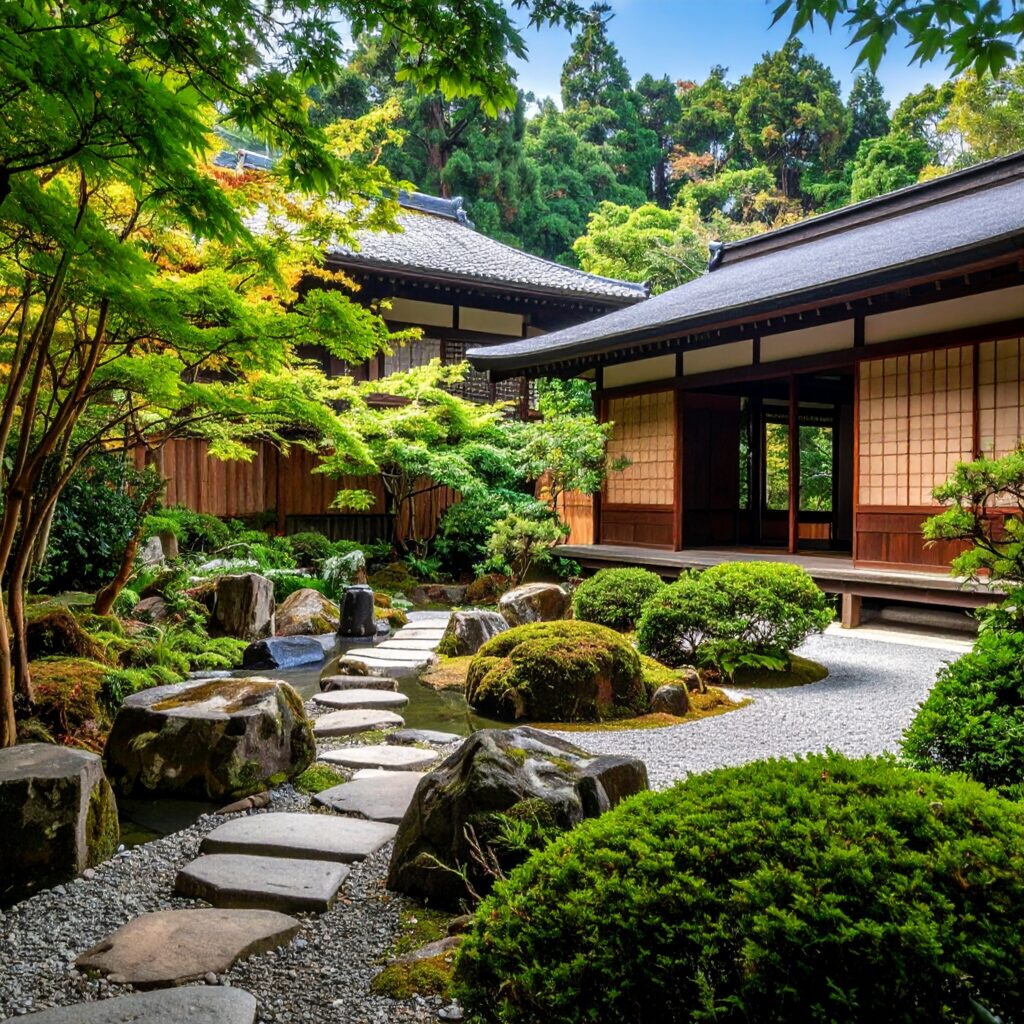One by one, the dry leaves fall—each a whisper of passing time.
A low, rhythmic sound of a shishi-odoshi resonating gently in the water basin.
The shadows of swaying bamboo and maple leaves dancing in the afternoon light.
In homes with Japanese gardens, stillness becomes a sensory experience—a harmony that speaks to the soul through sight, sound, scent, and season.
Today, a growing number of affluent individuals around the world are embracing this stillness as a way of life.
In this article, we explore why homes with Japanese gardens are quietly becoming the preferred choice of the wealthy, both in Japan and abroad—and examine the essence of what it truly means to own beauty, through the perspectives of culture, space, and investment.

■ The Philosophy of Designing for Stillness
Compared with Western gardens with a pursuit of visual beauty, Japanese garden is a space created to be felt—an invitation to experience silence.
- A stream that flows without a sound.
- Stepping stones and moss that shape space.
- A nure-en veranda where dappled sunlight gently shifts with time.
- Maples, cherry trees, pines, and stone lanterns that reflect the subtle rhythms of the seasons.
Together, these elements form a poetic landscape—a distilled expression of nature in its quietest form.
This aesthetic of negative space offers what is perhaps the rarest luxury in a world overwhelmed by excess—stillness.
■ A Mindful Space for the World’s Affluent
From investors in London and New York to executives in Bangkok and Singapore, the world’s most discerning individuals are turning their attention to Japanese gardens—
seeking stillness, harmoniously composed environment, and emotional space.
- A non-verbal realm within one’s own home.
- A pause from the digital world.
- A setting where spiritual traditions—meditation, tea ceremony, calligraphy, yoga—intertwine seamlessly with nature.
These qualities offer a form of luxury that differs profoundly from its Western counterpart. They define a deeper, quieter opulence—and render Japanese garden residences not merely homes, but irreplaceable cultural assets.
■ Reimagining the Garden: Where Japanese Tradition Meets Contemporary Living
While Japanese gardens have long been associated with traditional homes and historic architecture, a new movement is emerging—one that blends serenity with modern design.
In this evolution, the Japanese garden is no longer a relic of the past—but a living technology of stillness, redefined for the way we live today.
- New-build residences in Kyoto, Kamakura, and Hayama are now showcasing collaborations between architects and landscape artists.
- Tsuboniwa-styled inner garden
- Maintenance-free gardens tailored for international owners
- Rooftops and balconies are being transformed into minimalist moss gardens.
In this evolution, the Japanese garden is no longer a relic of the past—but a living technology of stillness, redefined for the way we live today.
■ The Investment Value of a Home with a Japanese Garden
While often overlooked in conventional valuations, the garden is, for affluent buyers, the ultimate marker of distinction.
A home with a Japanese garden is more than a place to dwell. It is an asset to be lived in, cherished, and passed on. A work of total living art—quietly appreciating in meaning over time.
- Premium rental yields as luxury villas in Karuizawa, Hakone, Kyoto, and beyond
- Strong emotional appeal for international buyers who value aesthetics and cultural heritage
- Elevated resale potential as a symbol of authentic “Japaneseness”
- A legacy asset—transferrable not only in monetary value, but in cultural meaning
A home with a Japanese garden is more than a place to dwell. It is an asset to be lived in, cherished, and passed on. A work of total living art—quietly appreciating in meaning over time.

■ Summary: The Silent Luxury That Enriches the Soul
Beyond the pursuit of opulence lies something rarer—profound stillness.
And at the pinnacle of that experience stands the Japanese garden home.
Return home, and be greeted by the whisper of wind and the quiet presence of greenery.
And with that alone, the quality of life begins to shift—quietly, profoundly.
A home in Japan where stillness is not rare, but intrinsic—may be the most tranquil, and perhaps the most powerful asset you ever own.




